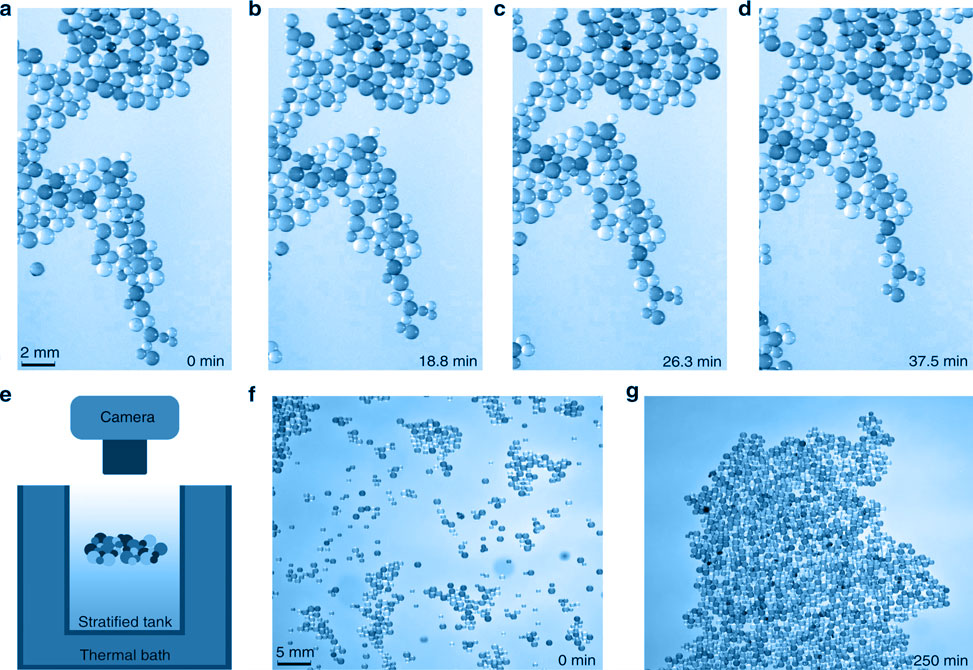Discovering New Underwater Force

This image shows a time series, a through d, of self assembly of collection of neutrally buoyant spheres suspended within a sharply salt-stratified fluid viewed from above. Spheres radii and densities are 0.025–0.05cm and 1.05 g cc−1, top fluid is fresh water, 0.997 g cc−1, bottom is NaCl water solution of density 1.1 g cc−1. e Shows schematic experimental setup, f the initial cluster – different trial. FInally g shows the final cluster.
An extremely broad and important class of phenomena in nature involves the settling and aggregation of matter under gravitation in fluid systems.
In a study, published in Nature Communications, researchers from the Department of Mathematics at the University of North Carolina at Chapel Hill, in collaboration with colleagues from the School of Engineering at Brown University, and the Department of Physics and Center for Biological Physics at the Arizona State University, observe and model mathematically an unexpected fundamental mechanism by which particles suspended within stratification may self-assemble and form large aggregates without adhesion. This phenomenon arises through a complex interplay involving solute diffusion, impermeable boundaries, and aggregate geometry, which produces toroidal flows.
The Team members show that these flows yield attractive horizontal forces between particles at the same heights. They further observe that many particles demonstrate a collective motion revealing a system which appears to solve jigsaw-like puzzles on its way to organizing into a large-scale disc-like shape, with the effective force increasing as the collective disc radius grows.
Control experiments isolate the individual dynamics, which are quantitatively predicted by simulations. Numerical force calculations with two spheres are used to build many-body simulations which capture observed features of self-assembly.
